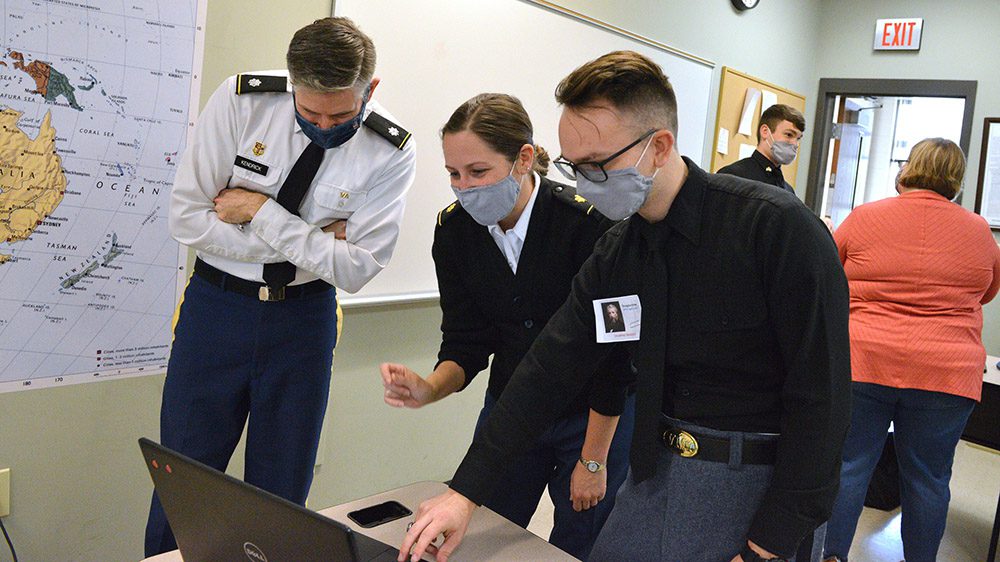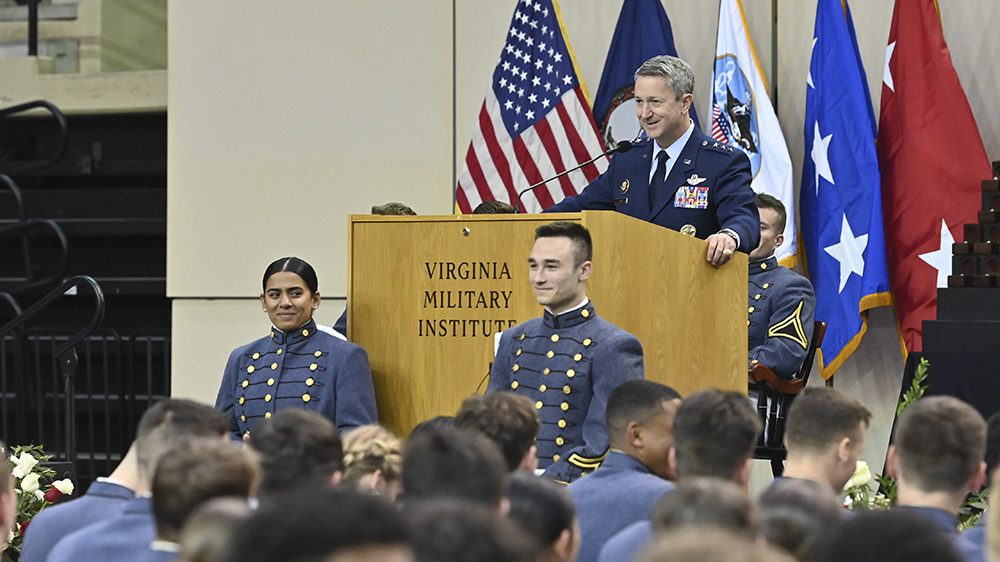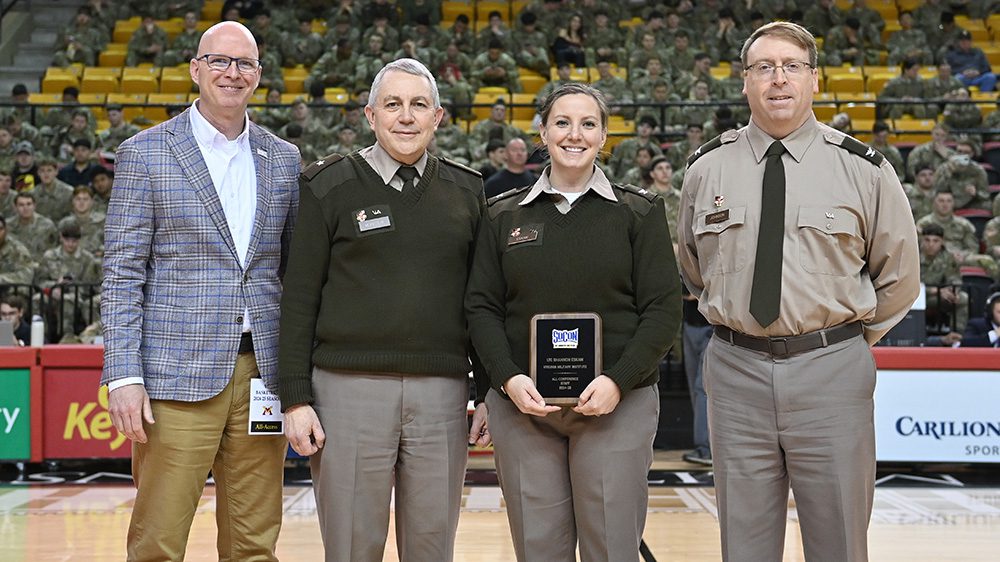Cadets in one of the French courses taught by Lt. Col. Jeff Kendrick, Ph.D., have had a unique opportunity this semester, as they’ve studied the language through the medium of a role-playing game.
Kendrick, associate professor of modern languages and cultures, first heard of Modernism vs. Traditionalism: Art in Paris, 1888–89, when he read an article about it in an academic journal. Immediately, he realized that the game’s skillful blend of language and culture would provide a new avenue to increase fluency among second language learners.
Throughout the game, cadets play the roles of artists, critics, and art dealers during the Belle Époque, a late 19th century flowering of French cultural expression in many areas, including the visual arts. The game was originally written in English, with art history students as its target audience, but was later adapted for use in French classes.
“The idea is that [cadets] become members of the French Academy of Fine Arts in the late 19th century,” said Kendrick. Among the well-known artists active during that era were Claude Monet, Edgar Degas, Paul Cézanne, Vincent van Gogh, and Georges Seurat.
Traditionally, Kendrick noted, language courses tend to separate language from culture. As a steppingstone between beginner and upper-level French classes, the class in which cadets are playing the game—French 307, Intensive Review of French Grammar and Phonetics—provided the ideal place in which to unite the two.
“In this bridge course, we wanted to continue that idea and help cadets see that French grammar and phonetics [are] connected to French history and French culture and artistic expression,” Kendrick commented. “That’s kind of the idea behind the game.”
As a culminating exercise before VMI moved to online instruction Nov. 23, 2020, the 15 cadets in the class gave an “art show” in Kilbourne Hall Nov. 20, in which those playing the roles of artists attempted to sell their works to buyers, who were represented by faculty members from a variety of departments. Those playing the roles of art critics and dealers advocated for the artists they favored.
To mimic the hierarchy established by the salon, the annual show put on in Paris by the Académie des Beaux-Arts, Kendrick made sure that some artists and their supporters had more resources than others. Those associated with the Academy and invited to the salon were given multiple laptops, plus a projector, for showing their art to “buyers.”
Dealers were provided with one laptop each, and artists not associated with the Academy had no laptop and were kept outside the room set aside for Academy members, where they had to find creative ways to showcase their art, just as an artist without resources in any era might set up a street corner show.
Determining a winner in Modernism vs. Traditionalism isn’t as easy as it is in checkers or Monopoly. “Each character has specific victory objectives,” Kendrick explained. Artists win when they sell their art, of course, and critics win when buyers choose the works of artists they favor. Sometimes, cadets must work together to accomplish the objectives for victory; other times, they have to compete with one another. This aspect of the game, Kendrick realized as he planned for the class, fits well within VMI’s adversarial system, in which cadets strive for individual accomplishment but also work with others to succeed.
“This kind of pedagogy fits perfectly within the VMI model,” he commented. Having taught French 307 multiple times since he joined the VMI faculty in 2013, Kendrick has seen the cadets’ language skills grow more naturally this semester, most likely due to the game as backdrop.
“We’ve been working all this semester to develop a vocabulary to talk about art,” he stated. “I wouldn’t want to qualify [cadets’ language development] as better, but I would say that there’s a definite increase in interest.”
Now, there’s a natural incentive for cadets to get it right. Kendrick said they come to class thinking, “I’ve got to be able to pronounce this correctly in order to make my sale and express my artistic vision.” While the game is in progress, Kendrick moves to the back of the room to act as an observer, only intervening when cadets need his assistance. “They’re doing the learning and the teaching, and it’s kind of cool to observe,” he said.




